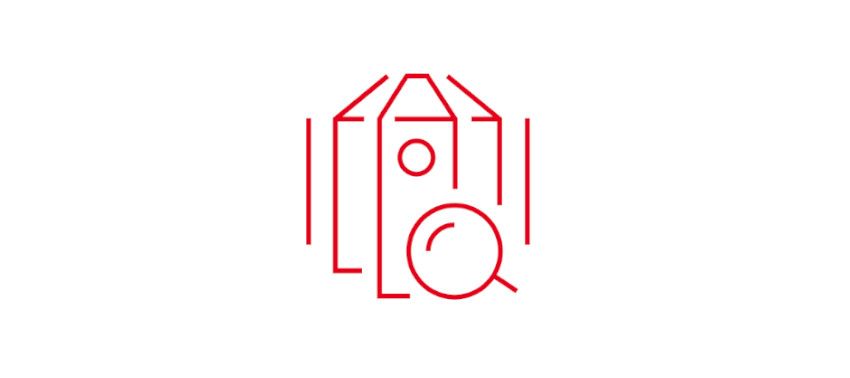Minimizing Exposure To Hazards With The Right Protective Equipment:
<span style="text-shadow: 3px 3px 5px black; ;">Hazardous Dusts
</span>
When working in hazardous environments, choosing the right protective equipment (PPE) is essential for the safety of workers. DuPont offers different solutions to tackle various environments. Specifically, Tyvek® coveralls can provide durable, comfortable, and robust protection against hazardous dusts, including asbestos, crystalline silica dust, and Polychlorinated biphenyls (PCB) dust.
What is Asbestos?
Asbestos is naturally occurring fibrous silicate minerals. Asbestos fibers are resistant to heat and strong and found in thermal insulating materials such as laggings and coatings, floor tiles, roofing, asbestos cement products, electrical insulating materials, as well as vehicle clutch and brake linings. Since asbestos fibers can release into the air, inhalation of asbestos fibers can have serious health effects, including asbestosis, lung cancer, and mesothelioma.
Though it’s largely prohibited from use, asbestos is highly dangerous and can still be found in many buildings and machines. Protective coveralls made of DuPont™ Tyvek® can provide durable, comfortable and robust protection against the many hazards of working with asbestos. Building maintenance workers are at a high risk of contact with these fibers when working on insulation in buildings and industrial installations such as pipes, roofs, walls etc.
What is Crystalline Silica Dust?
Crystalline silica is a basic ingredient of the Earth's crust, found in many naturally occurring and man-made materials, including rock, soil, sand, concrete, and brick. Crystalline silica dust exposure is associated with foundry work, sandblasting, hydraulic fracturing, and many other jobs. Workers exposed to crystalline silica dust are at increased risk of developing serious health problems, including silicosis and other respiratory diseases.
What is Polychlorinated Biphenyls (PCB) Dust?
PCBs are man-made organic chemicals consisting of carbon, hydrogen, and chlorine atoms, used in various industries. Demolishing industrial and residential buildings containing PCBs could expose workers to PCB dust. PCBs have been shown to cause various adverse health effects.
Controlling the Spread of Hazardous Dust Particles
With all workplace hazards, the EU expects employers to apply the hierarchy of exposure controls to protect workers. Employers should eliminate hazards or substitute lower-hazard alternatives first, followed by engineering solutions and administrative controls. If residual risk remains, then the use of personal protective equipment (PPE) is necessary.

<span style="font-size: 32px"><strong>Choosing Appropriate Protective Clothing</strong></span><br><br><span style="font-size: 20px">Protective coveralls must provide a high barrier against airborne particles. DuPont™ Tyvek® protective garments offer the ideal solution as protection is built into the fabric itself. Tyvek® coveralls have a tight fit with a smooth surface to prevent particles from adhering to the garment. They are compatible with additional PPE, comfortable to wear and allow high freedom of movement. <br><br> Before any work is done, a comprehensive risk assessment must be carried out, and preventive measures have to be established. Employers are required to provide the necessary organization of work, appropriate equipment (including suitable personal protective equipment), safe systems of work, training, information, and supervision. Suitable personal protective equipment in general includes respiratory equipment, coverall, gloves and safety boots. <br><br> To avoid cross contamination when working with asbestos, protective coveralls must provide a high barrier against airborne particles (Category III, Type 5), and meet the following general requirements: </span>
- High particle barrier (material, seams)
- Smooth surface to prevent particles from adhering to the garment
- Tight fit at arm and leg openings (elasticated cuffs and ankles)
- Compatible with additional PPE (masks, goggles, gloves)
- Comfortable to wear, high freedom of movement
Protective coveralls made of DuPont™ Tyvek® such as Tyvek® 600 Plus and Tyvek® 500 Xpert provide an excellent barrier against airborne particles (Type 5).
When compared with other Type 5 suits made of Microporous Film (MPF) and SMS (Spunbond/Meltblown/Spunbond), Tyvek® coveralls show a significantly lower Average Total Inward Leakage (TILa) according to EN ISO 13982-2* with an average value of less than 1%. The Type 5 product standard allows for an inward leakage of up to 15% in 8 out of 10 suits tested.
Thanks to the unique non-woven structure of Tyvek®, which forms a durable barrier against airborne particles and many water-based inorganic chemicals, barrier performance will remain intact even if the outer layers become abraded in places. With MPF, the protective outer layer is easily damaged by abrasion, whereas the more open structure of SMS allows more particles to penetrate the garment.
Beyond its high abrasion and tear resistance, Tyvek® is also lightweight and soft, as well as permeable to both air and water vapor, providing a high level of wear comfort. Thanks to its smooth surface and antistatic treatment, Tyvek® prevents particles from adhering to the coverall.
Durable and Robust Protection
DuPont™ Tyvek® protective clothing, including Tyvek® 600 Plus and Tyvek® 500 Xpert, provide a high barrier against air-borne particles and offer a durable and robust protection against fine particles and fibers. The unique non-woven structure of Tyvek® fabric forms a durable barrier against airborne particles and water-based inorganic chemicals, providing long-lasting protection, even if the outer layers become abraded. These protective coveralls feature stitched, and over-taped seams for high particle barrier performance, elasticated face, wrists, and ankles for a tight fit, and Tyvek® zipper with self-adhesive flap for enhanced protection. They are also comfortable to wear, lightweight, and permeable to both air and water vapor. Overall, these DuPont™ Tyvek® solutions can provide the necessary protection needed for workers exposed to asbestos, crystalline silica dust, Polychlorinated biphenyls (PCB) dust, and other hazardous dusts.
Our Protective Clothing Solutions for Hazardous Dusts

Typische Einsatzgebiete für Tyvek® 500 Xpert Schutzanzüge: Umgang mit Pharmazeutika, chemische Prozessindustrie, Öl- und Gasindustrie, allgemeine Wartungsarbeiten, Lackierarbeiten in der Automobilindustrie uvm.

Applications for Tyvek® 600 Plus garments include maintenance and dismantling jobs in the nuclear industry, pharmaceutical manufacturing or in research and biosecurity laboratories, as well as in medical* applications and when exposed to biological hazards.


